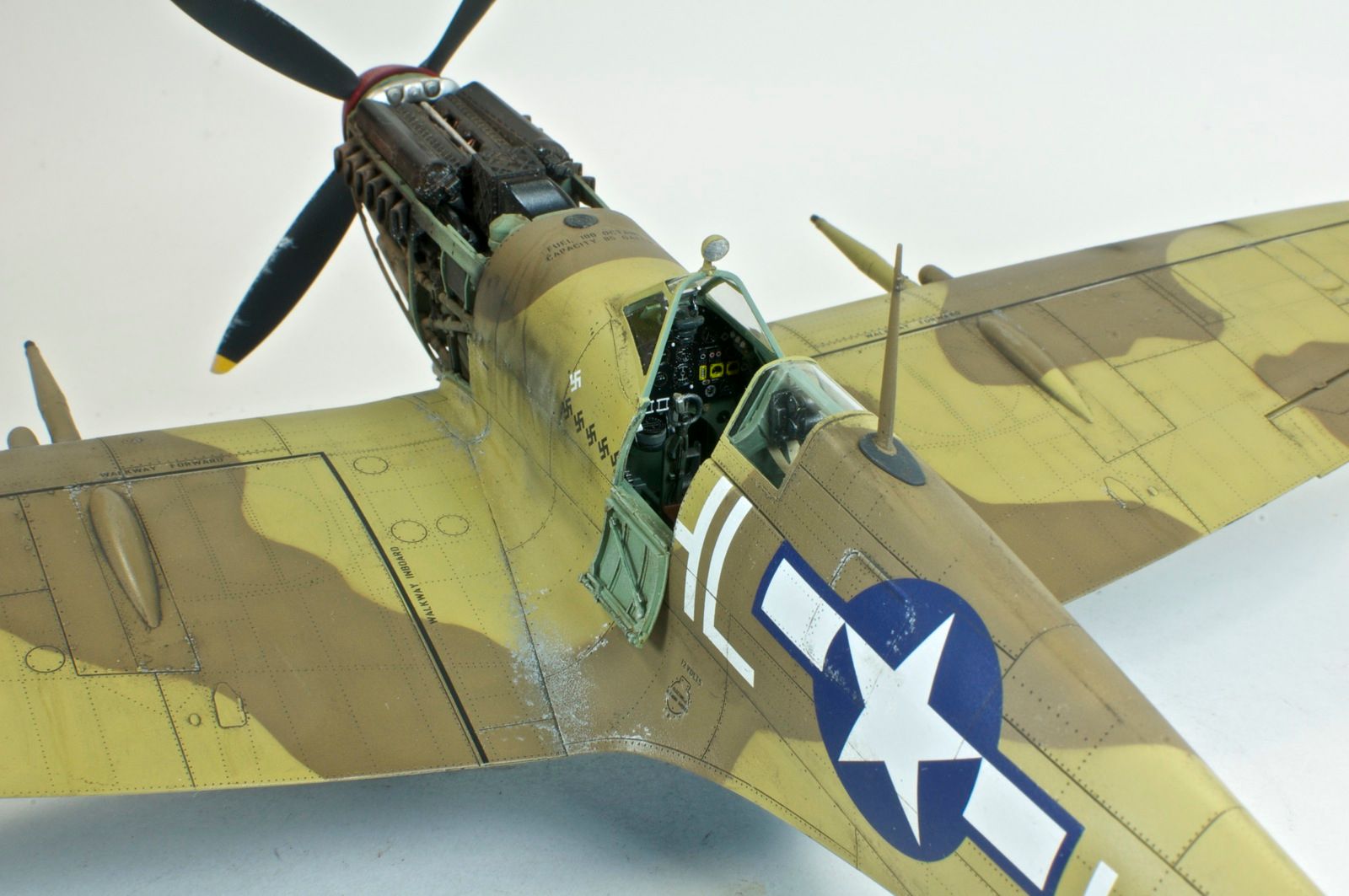As others have said, standard RAF camo was hard-edged. Don's approach of laying down tape, sketching the camo onto it, then taking it off and cutting it is a pretty solid way to go.
You could also photocopy the pattern at scale, lay down tape underneath, tape the pattern on top of it, and trace it out with an xacto (I think one of those swivel blade models would work very well here). Or you could do the same over parafilm, etc. I've also read of people using damp newspaper paper to mask hard-edged camo.
Your easiest option would be to buy vinyl masks like those gatorsmask.com sells.
On my Spit, I was dealing with some sort of repaint situation, since the reference photos show a tight, hand-sprayed edge. To get that hint of a soft edge, I traced the pattern onto tracing paper, then cut out approx. 1/4" "ribbons" that followed the camo lines. Taped these down on the base color side, masked the rest off with de-tacked tape, then sprayed away. The effect was mostly hard-edged, but the way I'd taped it gave the tracing paper some "flap" so that a very faint soft edge formed. It's a technique I plan on using frequently in the future.

On the Bench: 1/32 Trumpeter P-47 | 1/32 Hasegawa Bf 109G | 1/144 Eduard MiG-21MF x2
On Deck: 1/350 HMS Dreadnought
Blog/Completed Builds: doogsmodels.com